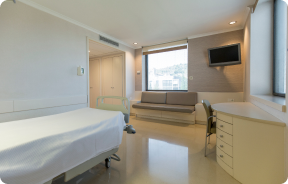

 Centro Médico Teknonen/health-centers/centro-medico-teknon
Centro Médico Teknonen/health-centers/centro-medico-teknon Centro Médico Teknonen/health-centers/centro-medico-teknonHospital Quirónsalud Barcelonaen/health-centers/hospital-quironsalud-barcelona
Centro Médico Teknonen/health-centers/centro-medico-teknonHospital Quirónsalud Barcelonaen/health-centers/hospital-quironsalud-barcelona- Centro Médico Teknonen/health-centers/centro-medico-teknonHospital Quirónsalud Barcelonaen/health-centers/hospital-quironsalud-barcelona
Un aspecto, dentro de la especialidad de la ginecología, que ha experimentado una gran expansión tecnológica en los últimos años es la cirugía pélvica reconstructora por laparoscopia de las disfunciones del suelo pelviano: incontinencia urinaria, prolapso genital e incontinencia fecal.
La musculatura del suelo pelviano da soporte y ayuda al control de la vagina, el útero, la vejiga urinaria y el recto. Los transtornos de este suelo pelviano tienen diferentes orígenes, y predisponen a las mujeres a una serie de síntomas, como la pérdida involuntaria de orina, dolores pelvianos, dificultades en las relaciones sexuales, etc, lo que comporta una pérdida en la calidad de vida.
La mayoría de las pacientes prefieren consultar sus problemas con el ginecólogo, antes que con el médico de cabecera o el urólogo, lo que confiere una mayor dimensión a la Uroginecología en el estudio para el diagnóstico y tratamiento de este tipo de transtornos, que tanto afectan a la vida de las mujeres.
Cada vez se demuestra de una manera más eficaz que la cirugía por laparoscopia es la cirugía de la feminidad, la de la mujer por excelencia. Preserva el equilibrio biológico y fisiológico, es decir el ecosistema del espacio en que trabajamos.
- What are the different types of urinary incontinence?
- Stress urinary incontinence (SUI): involuntary loss of urine when pressure on the abdomen increases due to physical activity or effort.
- Urge urinary incontinence (UUI): involuntary loss of urine associated with a sudden and uncontrollable urge to urinate. It is often accompanied by an increase of frequency both during the day or at night. Also known as hyperactive bladder.
- Mixed urinary incontinence (MUI): a symptomatic combination of stress incontinence (SUI) and hyperactive bladder.
- Overflow incontinence: when the bladder does not empty completely, either because of obstruction or because the bladder muscle does not contract properly, causing loss of urine when the bladder is full.
- Others: anomalies in the urinary tract, neurological disorders, infection, inflammation, foreign bodies, stones, etc..
- What is the prevalence of urinary incontinence in women?
It is difficult to determine exactly. It is a problem that increases with age, many people regard it as normal and do not consult their doctor about it, and thus statistics are highly variable.
- What group is most affected by urinary incontinence?
From the age of 40, between 14% and 35% of women experience urinary incontinence. This frequency peaks between the ages of 50 and 60 years. From the age of 60, urge incontinence and mixed types increase, while stress incontinence decreases.
- Why is it important to distinguish between stress urinary incontinence and urge urinary incontinence?
It is very important because the treatment is different in each case, ranging from pysiotherapy to bio-feedback, electro-stimulation, medical treatment or surgery.
- What is urinogynecology?
Urinogynecology is a sub-speciality of obstetrics and gynecology for the diagnosis and treatment of pelvic floor disorders. It covers frequent cases such as urinary incontinence and prolapse of the pelvic organs, but is in fact more complicated; it also includes fecal incontinence, bladder evacuation disorders, difficulty in defecation, sexual disfunction and chronic pain. It must therefore be treated conjointly and from a comprehensive and integral point of view.
- What is the pelvic floor?
The pelvic floor is all the muscles, ligaments, connective tissue and nerves that support and control the uterus, vagina, bladder, urethra and rectum.
- What are the symptoms of pelvic floor disorder?
- Urinary incontinence: involuntary loss of urine.
- Loss of control of stool and discharge of gases.
- Genital prolapse: a condition in which the pelvic organs descend from their normal anatomical position towards the vagina, with the feeling of a "lump" at the level of the external genitalia.
- Pelvic pain, soreness or pain in the bladder or urethra.
- Disorder or discomfort in sexual relations.
- What is the pelvic floor rehabilitation or physiotherapy?
They are exercises to improve elasticity and muscular strength, to strengthen closure of the urethra and prevent urine loss. The aim is to tone up the muscles of the pelvis, maintain muscular contraction and increase the number of repetitions, and they are known as Kegel exercises. They can be combined with the use of vaginal cones.
- What does surgery for urinary incontinence involve?
There are two approaches:
- Transvaginal surgery: by means of Tension-free Vaginal Tape, TOT, cystorraphy... It is performed in cases of SUI or mixed type incontinence in which no other disorder of the pelvic floor is involved. It is a quick and simple operation performed with general anaesthetic and leads to rapid recovery with satisfactory results. This type of operation is favourably received by patients, even those of more mature years.
- Laparoscopic surgery: when urinary incontinence is associated with uterine prolapse, the most frequently employed technique is the Burch operation (retropubic colposuspension), since with laparoscopy other procedures for reestablishing the normal support for genital structures can also be used at the same time, such as colposacropexis with tension-free tape.
- What are the advantages of surgery by laparoscopy?
A more direct view of the deeper areas of the pelvis is achieved, with easier access to anatomical spaces which are difficult to reach with other types of surgery. This provides better identification and analysis of the support defects, so that sutures are far more precise and effective than with traditional surgery. Blood loss during the operation is much less; post-operative pain is also reduced, with less need for medication; scarring is almost negligible; time spent in hospital is less; recovery is quicker, and the patient can return to work much earlier.
Is stress urinary incontinence a normal part of aging?
Involuntary urine loss is never considered normal. There are various risk factors associated with stress urinary incontinence (SUI). Careful epidemiological trials have shown that middle-aged women are at greater risk from stress urinary incontinence (SUI). Symptoms fluctuate with time, but when lower urinary tract (LUT) anomalies persist, they require the appropriate study and treatment.



































